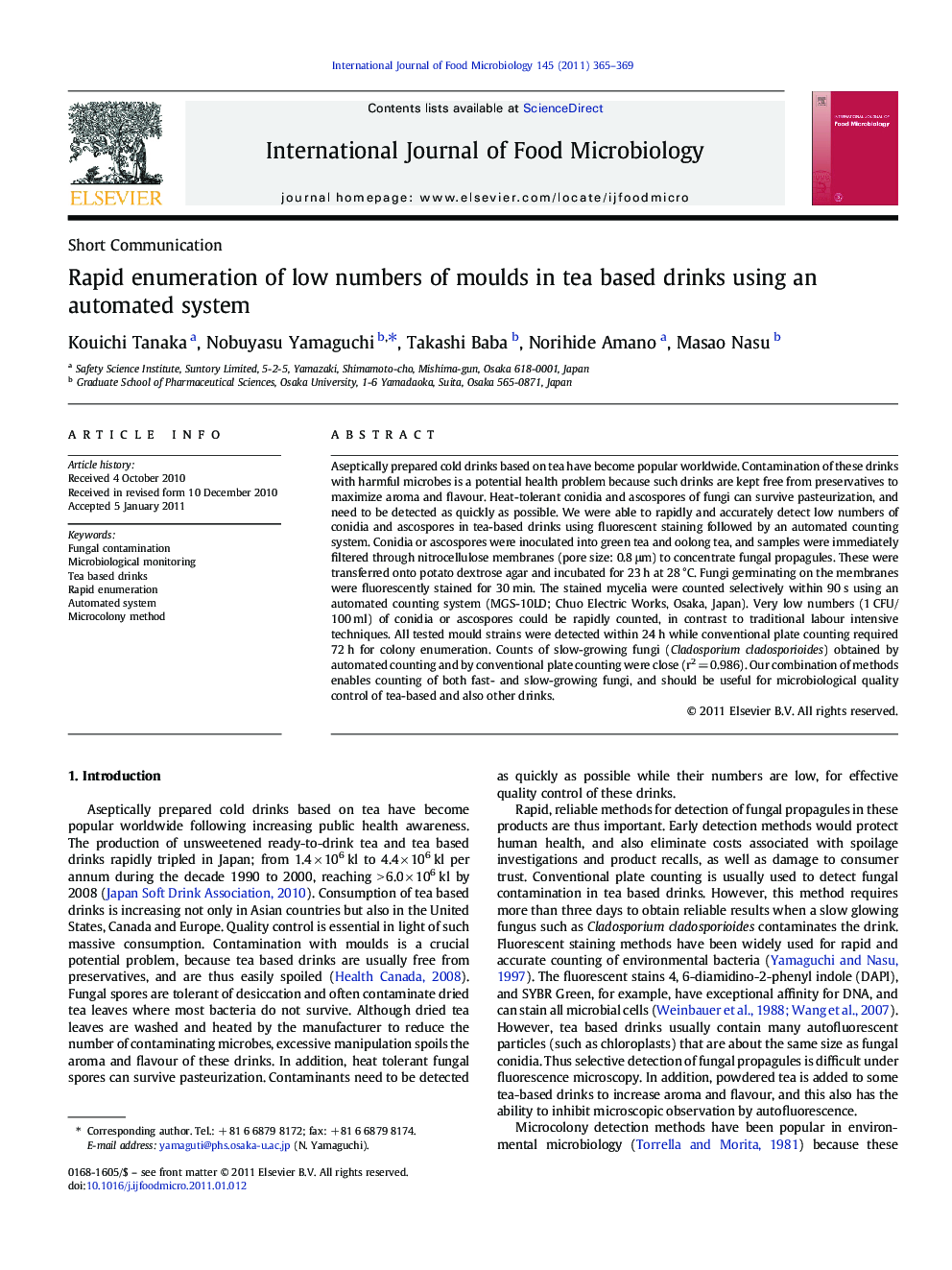| کد مقاله | کد نشریه | سال انتشار | مقاله انگلیسی | نسخه تمام متن |
|---|---|---|---|---|
| 4368768 | 1616674 | 2011 | 5 صفحه PDF | دانلود رایگان |

Aseptically prepared cold drinks based on tea have become popular worldwide. Contamination of these drinks with harmful microbes is a potential health problem because such drinks are kept free from preservatives to maximize aroma and flavour. Heat-tolerant conidia and ascospores of fungi can survive pasteurization, and need to be detected as quickly as possible. We were able to rapidly and accurately detect low numbers of conidia and ascospores in tea-based drinks using fluorescent staining followed by an automated counting system. Conidia or ascospores were inoculated into green tea and oolong tea, and samples were immediately filtered through nitrocellulose membranes (pore size: 0.8 μm) to concentrate fungal propagules. These were transferred onto potato dextrose agar and incubated for 23 h at 28 °C. Fungi germinating on the membranes were fluorescently stained for 30 min. The stained mycelia were counted selectively within 90 s using an automated counting system (MGS-10LD; Chuo Electric Works, Osaka, Japan). Very low numbers (1 CFU/100 ml) of conidia or ascospores could be rapidly counted, in contrast to traditional labour intensive techniques. All tested mould strains were detected within 24 h while conventional plate counting required 72 h for colony enumeration. Counts of slow-growing fungi (Cladosporium cladosporioides) obtained by automated counting and by conventional plate counting were close (r2 = 0.986). Our combination of methods enables counting of both fast- and slow-growing fungi, and should be useful for microbiological quality control of tea-based and also other drinks.
Research Highlights
► Fungi contaminated in tea-based drinks were counted within 24 h.
► Mycelia were selectively detected by fluorescent staining.
► Microcolony method is useful to distinguish fungi from non-microbial particles.
► Automated counting system is useful to count low numbers of fungi in drinks.
Journal: International Journal of Food Microbiology - Volume 145, Issue 1, 31 January 2011, Pages 365–369